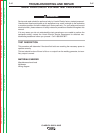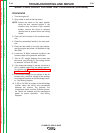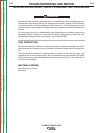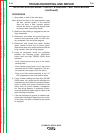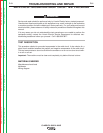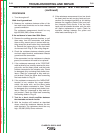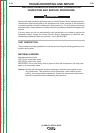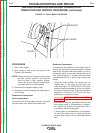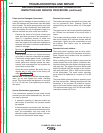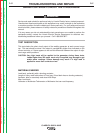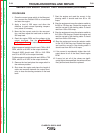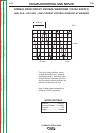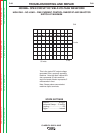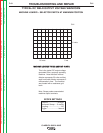
WELDING GENERATOR BRUSH AND COMMUTATOR
INSPECTION AND SERVICE PROCEDURE (continued)
Pitted and Are Damaged Commutator:
If pitting and arc damage to the commutator is evi-
dent, the machine may have been used with badly
worn brushes. The brush spring tension may have
been too low, or the brushes may have been stick-
ing in the holders. An out-of-adjustment rocker or a
serious overload may also cause this condition.
• Examine the inside of the brush clovers and
other parts that are close to the commutator. If
there is a significant amount of solder and
debris that has been thrown from the commu-
tator, the armature will need to be replaced and
the stator coils must be carefully examined and
tested for damage.
• Perform the Weld Circuit Ground and Short
Circuit Test.
• If the brushes are worn out, replace them and
re-surface or clean the commutator as needed.
If the brush springs appear weak, or damaged
in any way, replace them as well. The brush
holder plates and retainers should be clean,
smooth, and undamaged so the brushes can
move freely as they wear.
• Check the rocker position. Be certain that it is
aligned with or very close to the factory drill
mark. See Figure F.3.
IMPORTANT: If the rocker position requires adjust-
ment, do not over tighten the rocker clamping
screw. This screw should be tightened to a torque
of 70 to 75 Inch-Lbs. Over tightening can destroy
the rocker.
Uneven Commutator appearance:
If the commutator appears to have some normal
colored bars and some blackened bars, the arma-
ture may be shorted.
• If excessive sparking is observed and/or the
weld output is abnormal, the armature should
be replaced.
• If the commutator has uneven color, but there is
no sign of serious generator performance prob-
lems, the commutator may only need to be
cleaned by lightly stoning the surface. See cau-
tion note on commutator stone usage.
Examine the brushes:
The brushes and springs should all be in place and
not be excessively worn. Brushes should be
replaced if they are worn to within 1/4" of the pigtail
lead.
The pigtail lead of each brush should be positioned
so it allows free movement of the brush while it
wears.
The brushes should be seated so that the face of
each brush makes 95% minimum contact with the
commutator. Lightly stone the commutator to seat
the brushes. See caution note on commutator
stone usage.
Examine the brush holders:
The brush holder insulators must be clean and in
good condition and all of the hardware must be in
place. Replace any insulators that are cracked or
damaged in any way.
When installing the brush holders, they should be
rotated toward the brush retainer (clockwise rota-
tion when facing the brush holder mounting screw.)
until they stop. The edge of the brush holder plate
should be parallel with the surface of the commu-
tator and positioned .030 to .090 from the surface
of the commutator. The brush holder mounting
screw should be tightened to a torque of 24 to 28
Ft Lbs.
The brush holder plate and retainer assembly must
be clean and smooth. Nothing should prevent free
movement of the brushes. All electrical connec-
tions to the brush holders must be clean, and tight.
The recommended torque for 5/16-18 brush holder
connection screws is 8 Ft-Lbs.
TROUBLESHOOTING AND REPAIR
F-55 F-55
CLASSIC® 300D & 300G
Return to Section TOC Return to Section TOC Return to Section TOC Return to Section TOC
Return to Master TOC Return to Master TOC Return to Master TOC Return to Master TOC



